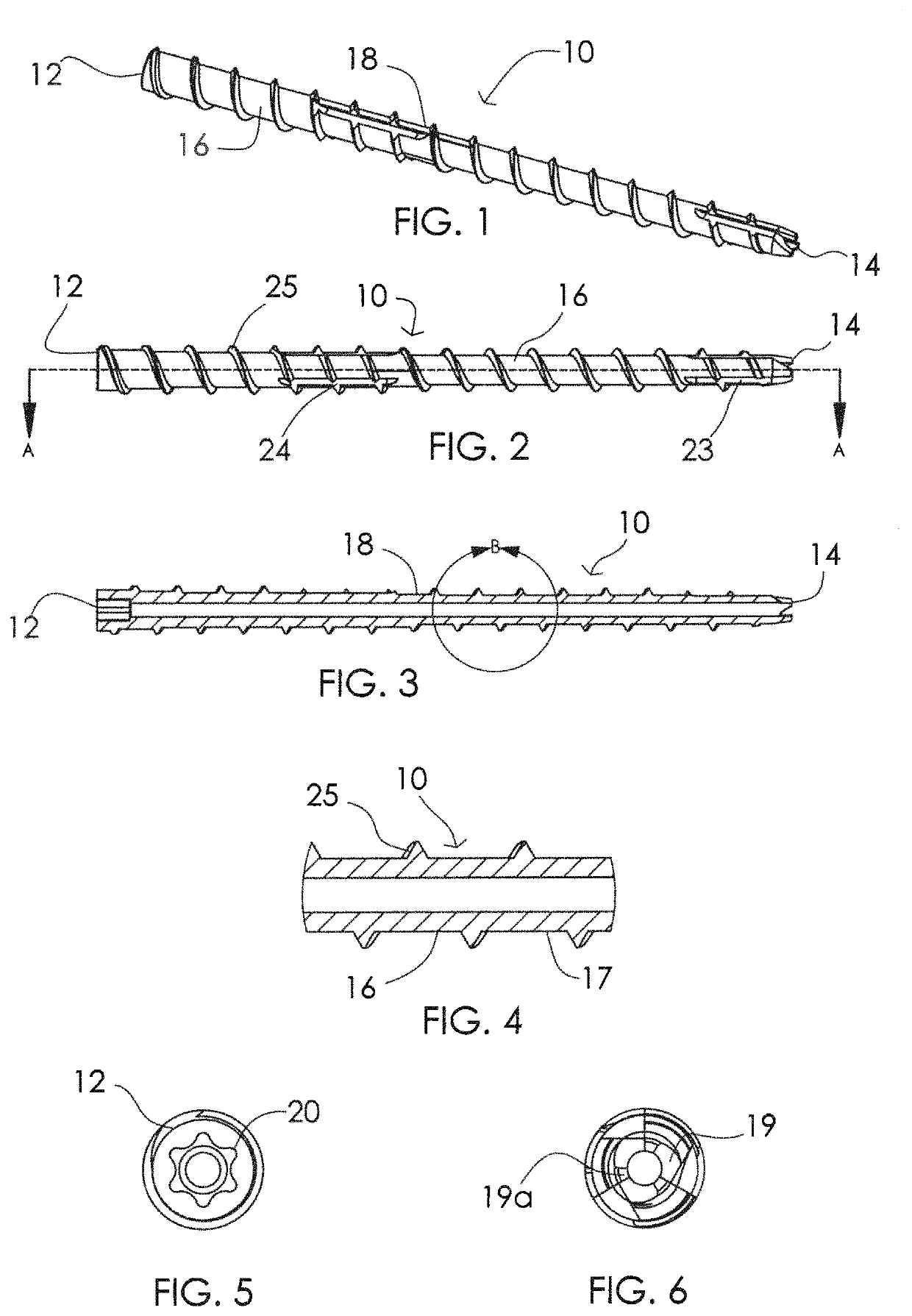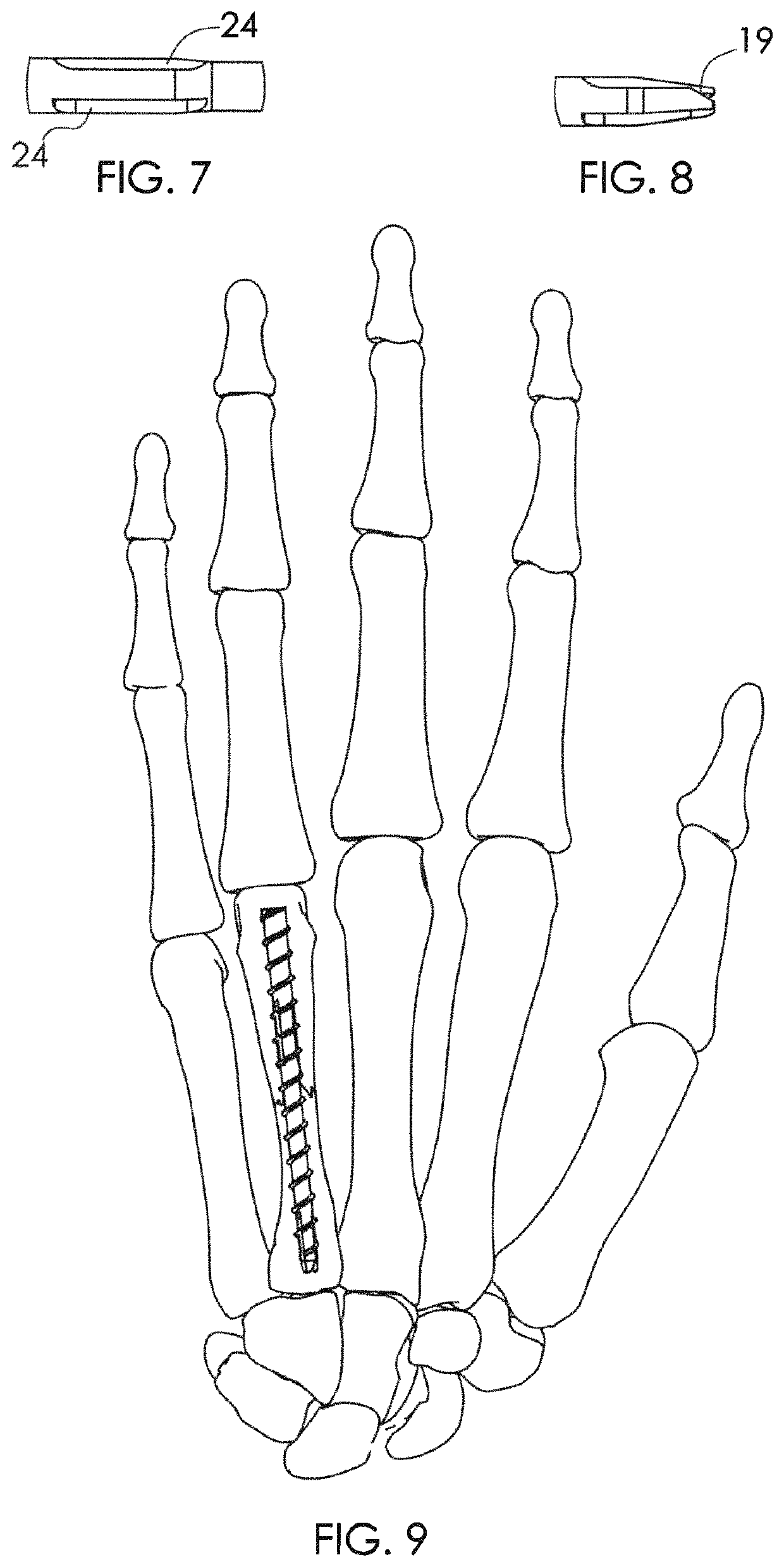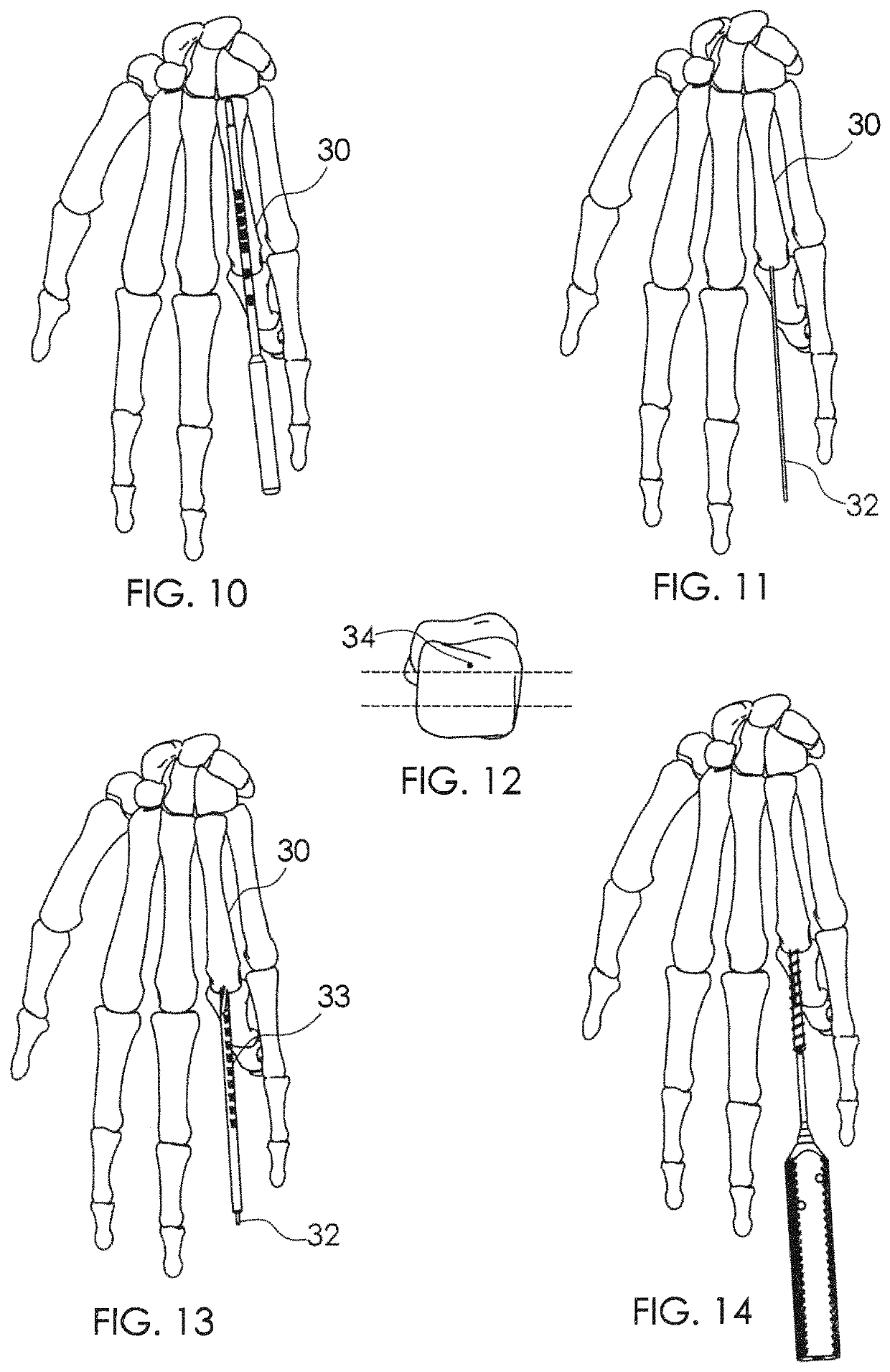Intramedullary threaded nail for radial cortical fixation
a technology of radial cortical fixation and threaded nails, which is applied in the field of intramedullary threaded nails for radial cortical fixation, can solve the problems of loss of muscle, proprioception and nerve health, and injury to the mid-hand and mid-foot, and achieve the effect of avoiding harm to the narrower leading end of the lower material
- Summary
- Abstract
- Description
- Claims
- Application Information
AI Technical Summary
Benefits of technology
Problems solved by technology
Method used
Image
Examples
Embodiment Construction
[0041]FIG. 1 shows an exemplary embodiment 10 of the threaded intramedullary nail of the present invention. The nail 10 may be formed of any suitable biocompatible material, such as surgical grade stainless steel, titanium, alloys of nickel and chromium, nitinol, PEEK, hydroxyapatite, bio-glass or other bio compatible materials or combinations of these materials. The nail 10 has a first end, or proximal end, 12, a second end, or distal end, 14, a shaft 16 with an outer surface 17, and a center portion 18 between first end 12 and second end 14. A cutting end 19 with a bevel and two, three or four teeth 19a is provided at the trailing end 14 (which is distal relative to the torque driving recess but is implanted in the proximal portion of the metacarpal) and a driving surface 20 in a drive recess 22 is formed in the top of first end 12.
[0042]The cutting point 19 helps to cut through any bone left behind when the bone is drilled to receive device 10, and further include 2-5 equally rad...
PUM
 Login to View More
Login to View More Abstract
Description
Claims
Application Information
 Login to View More
Login to View More - R&D
- Intellectual Property
- Life Sciences
- Materials
- Tech Scout
- Unparalleled Data Quality
- Higher Quality Content
- 60% Fewer Hallucinations
Browse by: Latest US Patents, China's latest patents, Technical Efficacy Thesaurus, Application Domain, Technology Topic, Popular Technical Reports.
© 2025 PatSnap. All rights reserved.Legal|Privacy policy|Modern Slavery Act Transparency Statement|Sitemap|About US| Contact US: help@patsnap.com



